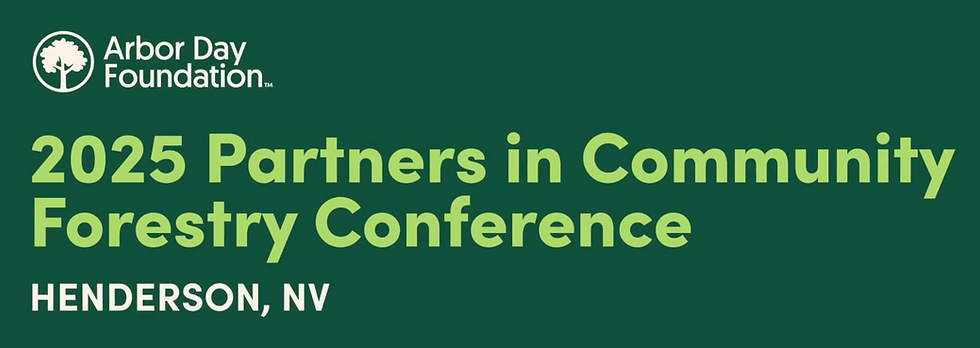WCISA 2021 - Far Out Arboriculture
- Marie Ambusk

- Jun 8, 2021
- 3 min read
Updated: Jun 8, 2021
Be sure to catch Gordon's talk and visit us at the virtual Trade Show!

TreesROI
Millions of trees are planted in our communities in a condition that prevents them from growing into mature, benefit-providing assets for tree owners and the environment. NURSERIES are at the ROOT OF THE PROBLEM! Research has shown that trees need to grow to maturity to receive the maximum benefits and create sustainable populations of trees where people live, work, and play. Trees planted with a defective root system, do not thrive, likely will not grow to maturity, may fail during normal weather events, needing removal and replacement pre-maturely. This is an unsustainable growing cycle where we continue to pay the costs of planting, early removal, and lost benefits.
The intention is not to simply plant trees, but to grow them. The nursery container production systems that impact the natural development of roots needs to be better managed to effectively grow trees. Until a process is available that can assess the quality of roots in a container or a root ball of a balled and burlap tree, the roots must be inspected and re-oriented at planting when the tree is removed from the container or the burlap and wire basket is removed from around the root ball.
Nursery plants start in small containers and are moved sequentially into larger containers during the production process until each tree is growing in the container size desired for sale. Simply correcting the final container's circling roots may not be sufficient to remove the uncorrected problems formed from previous containers, now growing deep inside the root ball. Washing the container media or soil off, pruning the roots as needed, and planting a bare root tree is the optimum way to assure a quality root system due to current industry container production practices.
Balled and burlap trees can begin growing in a container before moving to a field production system. Consequently, trees produced in balled and burlapped production systems may also have defective root systems. Exposing and sloughing the soil from the roots allows for inspection of the root system, adjustment to the roots as needed and planting a bare-root tree.
Most tree planters will not remove the soil and correct the significant root defects. The best investment is to have nurseries grow trees with functional root systems, devoid of stem girdling roots, circling roots, and other root defects. The extra cost for nurseries to follow a process to accomplish this, will be offset by higher selling prices. If the nurseries can follow a process to accomplish this, the trees may be more expensive, but the benefits far outweigh the additional production costs of high-quality trees. Our INSIGHT application of computer technology arriving in 2022 will allow the buyer/brokers/growers to guarantee verifiable root system quality and provide the growers with a tool and methodology to provide specification compliance certification grading for each tree, at the point of sale.
From our experience purchasing trees, we would much rather buy more expensive nursery trees with high quality root systems that we can trust trained laborers and volunteers to plant with confidence and without significant root defects. The likelihood of proper planting occurring and allowing for a tree to grow to maturity is much higher. That is sustainability and that is a good ROI. Compare the success of this process to the alternative of fixing the root problems at the time of planting that is likely not to happen. The solution is to
GROW BETTER TREES!
Marie Ambusk, Gordon Mann, Jim Flott
Co-Founders at TreesROI
06/07/2021





Comments